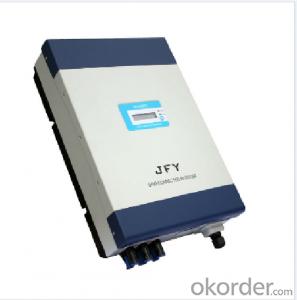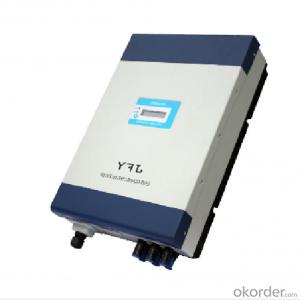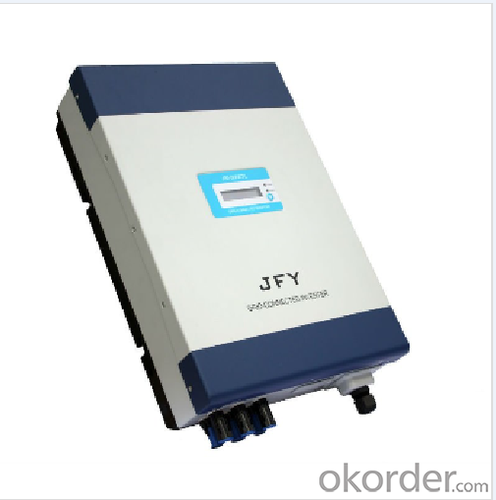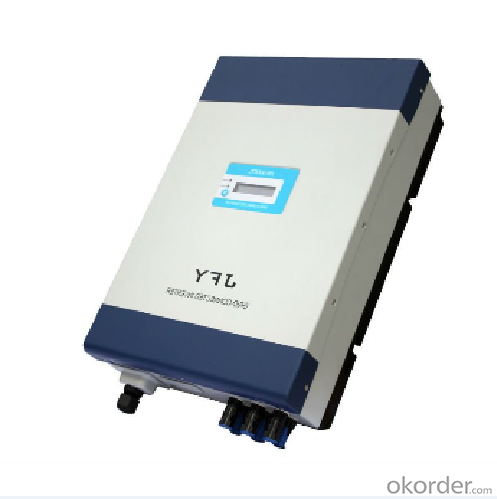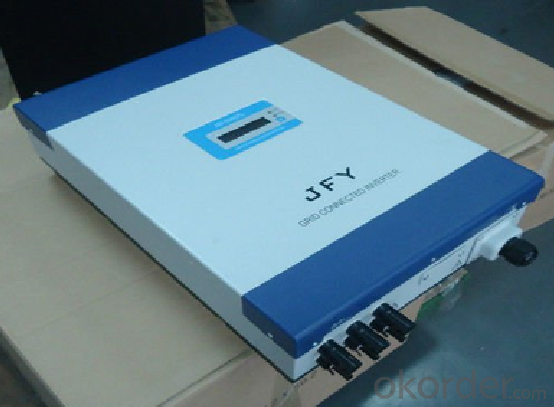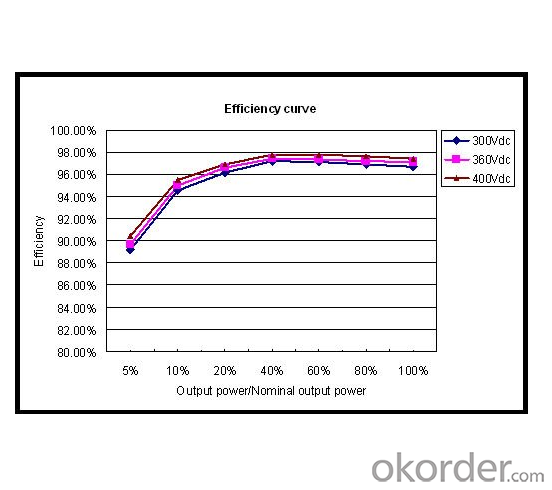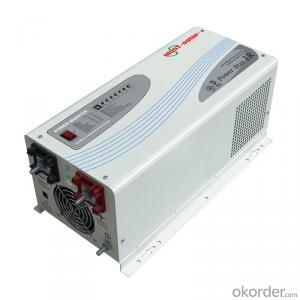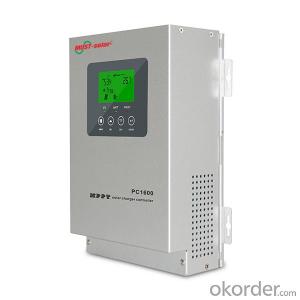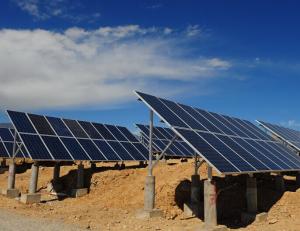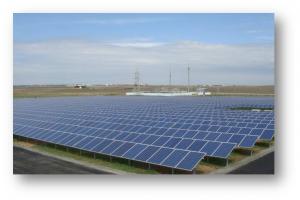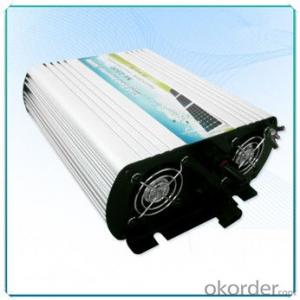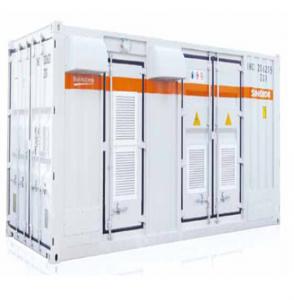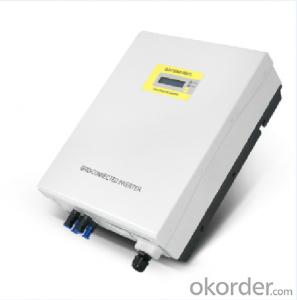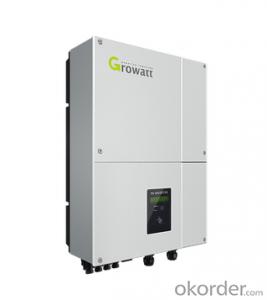PV Grid-Tied 5kw Solar Inverter JSI-5000TL
- Loading Port:
- Qingdao
- Payment Terms:
- TT OR LC
- Min Order Qty:
- 50000 watt
- Supply Capability:
- 3000000 watt/month
OKorder Service Pledge
OKorder Financial Service
You Might Also Like
1. Structure of PV Grid-Tied 5kw Solar Inverter JSI-5000TL Description
1.High Efficiency 97.6%
2.5 Year warranty
3.Transformerless, pure sine wave
4.TUV,VDE,CE,SAA,CEI0-21
2. Main Features of thePV Grid-Tied 5kw Solar Inverter JSI-5000TL Inverter
﹒Compact size, easy installation &maintenance;
﹒Low running noise, highest efficiency;
﹒Wide operating temperature range
﹒At least 5 years warranty
﹒High Quality ,competitive price
﹒TUV, CE, AS4777, G59/2 Certificate
3. PV Grid-Tied 5kw Solar Inverter JSI-5000TL Images

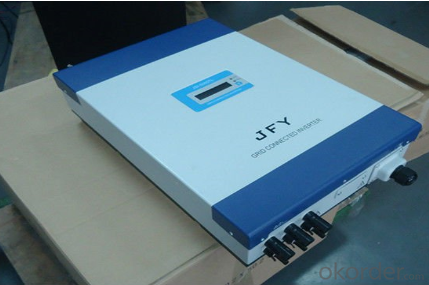
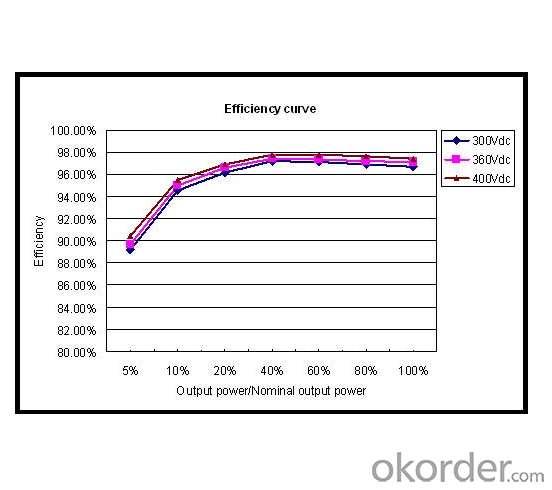

4. PV Grid-Tied 5kw Solar Inverter JSI-5000TL Specification
CHARACTERISTICS | JSI-5000TL |
Input Data(DC side) | |
Max. DC power | 5300W |
Max. DC voltage | 550Vdc |
MPPT Operating range | 100~500Vdc |
Number of parallel inputs | 3 |
Number of MPPT trackers | 1 |
Max. input current (total) | 22.5A |
Output Data(AC side) | |
Nominal output power | 4600W |
Max. Output power | 5000W |
Nominal output current | 20A |
Max. output current | 24A |
Nominal AC voltage | 230Vac |
Possible AC voltage range * | 190~265Vac |
Nominal AC grid frequency | 50Hz |
Possible AC grid frequency range* | 50 ± 5 Hz |
Power factor(cos φ) | >0.99 |
Harmonic distortion(THDI) | <3%(at nominal output power) |
Efficiency | |
Max. efficiency | 97.6% |
Euro efficiency | 97% |
MPPT efficiency | 99.6% |
Genaral data | |
Dimensions (W / D / H) | 345*152*505mm |
Net weight | 23.7Kg |
Operating temperature range | –25 °C ~ +60 °C |
Noise emission (typical) | ≤ 25 dB(A) |
Power consumption at night | 0 W |
Electrical isolation | Transformer-less |
Cooling concept | Natural cooling |
IP Code | IP65 |
Communication | RS-485/RS-232 |
5. FAQ of PV Grid-Tied 5kw Solar Inverter JSI-5000TL
Q1. What is the difference between inverter and solar inverter?
A1. Inverter only has AC inpput, but solar inverter both connect to AC input and solar panel, it saves more power.
Q2. What is the difference between MPPT&PWM?
A2. MPPT has higher efficiency, it can track the max power point and won't waste energy.
Q3. What is the waranty of product?
A3. 12 months.
- Q: Can a solar inverter be used with a solar-powered EV charging network?
- Yes, a solar inverter can be used with a solar-powered EV charging network. A solar inverter converts the direct current (DC) generated by solar panels into alternating current (AC) that can be used to power electric vehicles (EVs). By integrating a solar inverter into a solar-powered EV charging network, the excess solar energy can be efficiently utilized to charge EVs, reducing dependence on the grid and promoting sustainable transportation.
- Q: Can a solar inverter be used for both single-phase and three-phase applications?
- No, a solar inverter cannot be used for both single-phase and three-phase applications. Different types of inverters are designed specifically for either single-phase or three-phase systems, as they have different voltage and power requirements.
- Q: How does the weight of a solar inverter affect its installation process?
- The weight of a solar inverter can significantly impact its installation process. Heavier inverters may require additional support structures or mounting equipment to ensure proper installation and stability. They may also require more manpower and specialized equipment during the installation process. Conversely, lighter inverters may be easier to handle and install, potentially reducing installation time and effort. Therefore, the weight of a solar inverter is an important consideration that can influence the overall installation process.
- Q: What is the maximum DC input current of a solar inverter?
- The maximum DC input current of a solar inverter can vary depending on the specific model and its design. However, in general, the maximum DC input current of a solar inverter is determined by its capacity and is usually specified by the manufacturer.
- Q: Can a solar inverter be used with both AC and DC power sources?
- No, a solar inverter is designed to convert DC power from solar panels into AC power for use in standard electrical systems. It cannot be used with both AC and DC power sources simultaneously.
- Q: How does a solar inverter handle variations in solar panel degradation over time?
- A solar inverter handles variations in solar panel degradation over time by continuously monitoring the performance of the solar panels. It adjusts the power output and voltage levels accordingly to optimize the energy conversion process. This adaptive capability allows the inverter to compensate for any decrease in efficiency caused by degradation, ensuring maximum power generation from the solar panels throughout their lifespan.
- Q: Can a solar inverter be used in conjunction with a generator?
- Yes, a solar inverter can be used in conjunction with a generator. In fact, it is a common setup in hybrid systems where the solar panels generate electricity during the day, and the generator provides power during periods of low solar production or high energy demand. The solar inverter converts the DC power from the solar panels and the AC power from the generator into a usable form for the connected appliances and the grid. This combination allows for a more reliable and efficient power supply.
- Q: Can a solar inverter be used with a solar-powered telecommunications system?
- Yes, a solar inverter can be used with a solar-powered telecommunications system. A solar inverter is an essential component of a solar-powered system as it converts the direct current (DC) generated by solar panels into alternating current (AC) that can be used to power various electrical devices, including telecommunications equipment. By using a solar inverter, the solar-generated electricity can be efficiently utilized to run a telecommunications system, making it a sustainable and environmentally-friendly solution.
- Q: Can a solar inverter be used for commercial applications?
- Yes, a solar inverter can be used for commercial applications. Solar inverters are commonly used in commercial settings to convert the direct current (DC) electricity generated by solar panels into alternating current (AC) electricity that can be used to power various commercial appliances and equipment.
- Q: Can a solar inverter be used with different types of energy storage systems?
- Yes, a solar inverter can be used with different types of energy storage systems. Solar inverters are designed to convert the direct current (DC) electricity produced by solar panels into alternating current (AC) electricity that can be used in homes and businesses. They can be connected to various types of energy storage systems, such as batteries, supercapacitors, or even grid-connected systems, allowing for efficient storage and utilization of solar energy.
Send your message to us
PV Grid-Tied 5kw Solar Inverter JSI-5000TL
- Loading Port:
- Qingdao
- Payment Terms:
- TT OR LC
- Min Order Qty:
- 50000 watt
- Supply Capability:
- 3000000 watt/month
OKorder Service Pledge
OKorder Financial Service
Similar products
Hot products
Hot Searches
Related keywords
